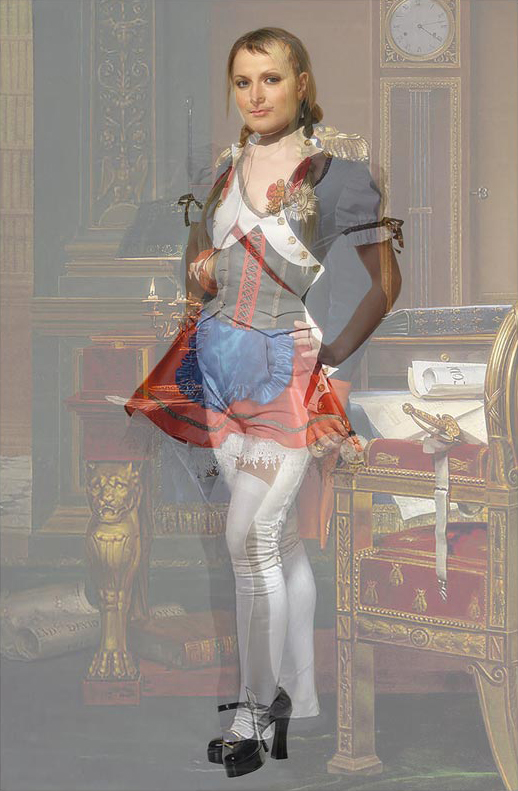
Napolean
Emerging more than twenty years ago from the San Francisco Bay Area, Deborah Oropallo (b. Hackensack, New Jersey, 1954) has moved from traditional painting and printmaking to incorporating digital media and imagery into her work, creating printed canvas paintings and related editions of pigment prints.
Oropallo has always regarded her artwork as based in photography. In her early work she painted imagery from found photographs. Later, she placed objects on a stat camera, capturing a shadow or silhouette from which she made silkscreens and stencils that transformed images of mundane objects into visual abstractions. Recently, Oropallo has been using her own photography, and digital work as a natural evolution. She says:
“I use the computer as the tool, but painting is the language of deliberation that is running through my head. I do not want to just repaint an illustration of what the computer can do, but to push the pixels themselves as paint, and to layer imagery and veils to create depth and volume. Like painting, this process can engage nuance and subtlety. It also has the ability to alter an image in a way that no other medium can deliver or predict.”
The images in her current body of work were initially borrowed from internet sites for sexy costume. Women in revealing pirate, soldier, and other outfits are posed in photographs that recall, in Oropallo’s words, “the formal portraiture male power stance with elaborate costume.” The artist deconstructs and enhances the images to investigate the seduction and power that are evoked by gesture and pose.
In GUISE, Oropallo further explores the concept by layering the images of men from 17th and 18th century portrait paintings. Painted portraits did not simply document the likeness of the sitter but were often contrived to convey a sense of his importance and authority. Nobility and dignity were attributes portrayed through stance, gesture, and attire, and portraits often involved costume and props. Soldiers wore elaborate uniforms and weaponry to show their bravery and stature; noblemen donned luxurious articles of clothing; and scholars and politicians stood with books at hand attesting to their knowledge.
Oropallo uses many famous portraits in GUISE, including several from the collection of the Fine Arts Museums of San Francisco. The valiant sea captain in Rembrandt’s (1606-1669) painting Joris de Caulerii (1632) becomes Gladiator; Sir Henry Raeburn’s (1756-1823) Sir Duncan Campbell, Scot Guards (ca. 1815) is transformed into the boxer of Knockout; and Paulus Moreelse’s (1571-1638) Portrait of a Man (ca. 1640) is reinvented as Lacy. The print George features George Washington as a uniformed soldier on the battlefield, over which is layered a woman in a provocative sailor outfit also standing with an arm akimbo. In all the prints, the vast symbolism of classic portraiture is employed, raising issues about gender, costume, fantasy, potency, power, and hierarchy. The artist asks, “Does the popularity of fetish fashion stem from the fact that it makes women appear strong and very powerful?”
— Anna Lucas, Achenbach Graphic Arts Council Curator 2006-2007
This essay is an edited version from the brochure accompanying Deborah Oropallo’s exhibition at the Anderson Gallery of Graphic Art at the De Young Fine Art Museum in San Francisco, March 17 – September 16, 2007. Read More
